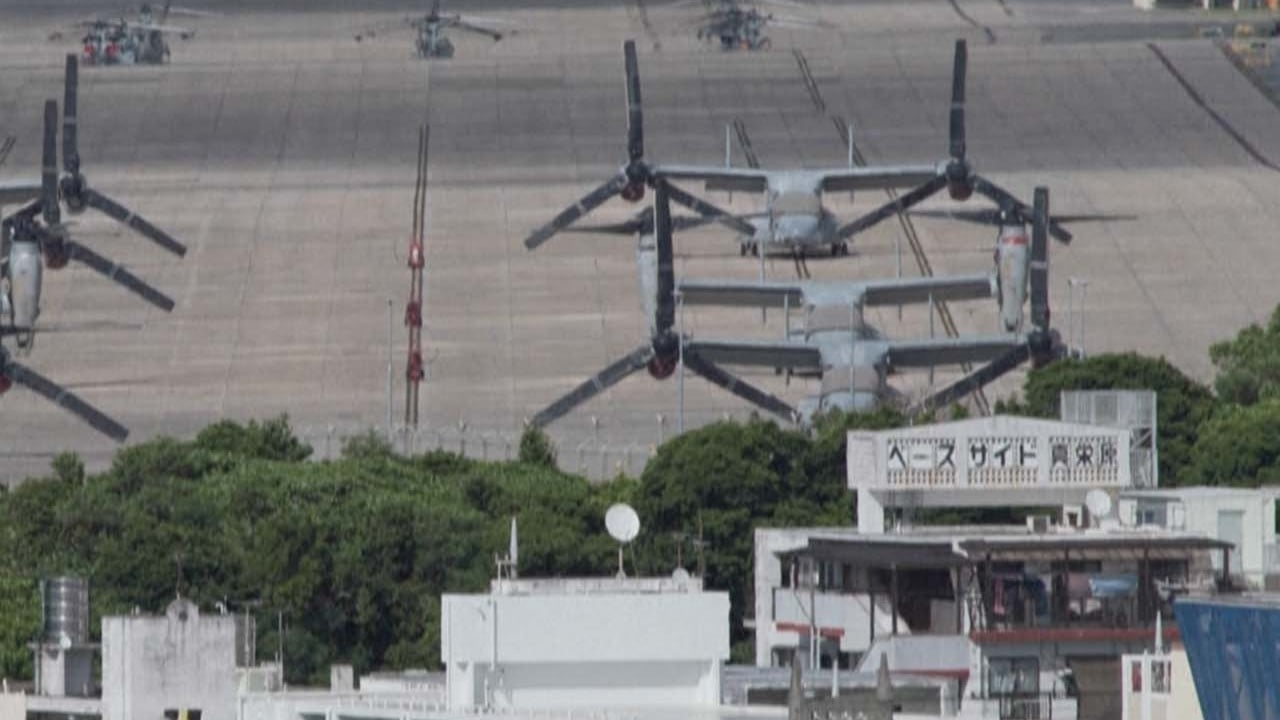
03:07
‘US bases on Okinawa inevitable’: perceptions shift in Japan on American military presence

The United States has started replacing the antiquated F-15 fighter jets at its bases in Okinawa with the more advanced F-22 Raptor stealth fighters, in a move seen as part of a redeployment of its assets in the region to prepare for a Taiwan contingency.
Defence experts said the arrangement – which puts the F-22s on a six-month rotation from Alaska starting this month – could prevent the United States’ expensive assets from becoming targets for Chinese missiles because the advanced jets would not be permanently stationed in Okinawa.
Others said the move could undermine the Pentagon’s efforts to counter China by ending the US Air Force’s permanent presence in the region with no clear long-term plan.
Former US Marine fighter pilot and diplomat Steve Ganyard said the move was a sign that concerns about China had overtaken the US Air Force’s traditional focus in the region on potential conflict in North Korea.
“You can look at it as the USAF coming to grips with the reality that nothing on the first island chain, especially not Kadena [air force base in Okinawa], will be survivable in a conflict with China,” he said, according to a report last week in US military newspaper Stars and Stripes.
The first island chain stretches from the Japanese archipelago through Taiwan to the Philippines and is seen as key to deterring China.
Ganyard, a former deputy assistant secretary of state, said the air force was deployed with a focus on potential conflict in North Korea, a scenario in which its rear bases in the chain were presumed secure.
“China changes that and puts everything south of Kagoshima [in southern Japan] particularly at risk,” he said.
In the same report, retired Marine Colonel Grant Newsham, a senior researcher with the Japan Forum for Strategic Studies in Tokyo, said China would “welcome” the withdrawal of the F-15s, while the Japanese would be “inwardly unhappy”, with no plans of their own to replace them.
Researcher Zhou Chenming, from the Beijing-based Yuan Wang military science and technology think tank, said the rotations of the elite heavy F-22s from Alaska to the region could provide extra support to the rear bases in the first island chain.
The rotation meant the US did not want to put its high-value F-22 jet under the combat range of People’s Liberation Army missiles, he said.
“The PLA just needs to use its short-range missiles to hit the Americans’ most valuable military assets on Kadena base, which is just 700km (435 miles) from Ningbo, headquarters of the Chinese navy’s East Sea fleet [in Zhejiang province],” Zhou said.
“The Americans will prefer to send their new generation but cheaper F-35 Lightning fighters on the front line [in Okinawa], and let the elite heavy F-22s play the support role at the rear bases.”
Macau-based military observer Antony Wong Tong said the arrival of the F-22s could be part of the Pentagon’s response to the PLA’s increasing deployment of J-20 Mighty Dragon jet fighters to China’s eastern coasts, where they could target any foreign military intervention in a war over Taiwan.
“The rotation of the F-22s would also make it harder for the Chinese military to predict its American counterpart’s strategic deployment,” Wong said.
“It’s not a wise decision to [base] F-22s on Kadena, which is the key target of the PLA’s Dongfeng missiles.”
Wong said the arrangement could be seen as a new norm for the US, with its naval operations already following a similar strategy.
All US aircraft carriers maintained a safe distance of at least 1,000km (621 miles) from the Chinese coast to keep them out of combat range for the PLA’s Dongfeng short-range missiles, he said.
Tensions have escalated since August when US House Speaker Nancy Pelosi visited Taiwan, which Beijing has vowed to bring under mainland control.
Most countries, including the US, do not recognise Taiwan as an independent state. Washington, however, opposes any attempt to take the island by force.
During unprecedented PLA war games near Taiwan – triggered by Pelosi’s visit – five of the 11 Dongfeng series missiles deployed during the exercise landed in Japan’s exclusive economic zone (EEZ).
Beijing rejected Tokyo’s complaint, saying the two sides had not agreed to the limits of the EEZ.
Cheung Mong, an associate professor with the School of International Liberal Studies at Japan’s Waseda University, said the deployment of the F-22s was a “situational preparation” for the eventual replacement of the F-15s with the cost-saving and more capable F-35.
“The Americans have transferred the full set of F-35 technology to Japan. The Japanese are able to assemble the aircraft by themselves, so as to provide logistic support once the US military needs them for war damage,” Cheung said.
“It’s not worth [having] the F-22 permanently based in the region, as the aircraft needs to fly back to the US homeland for maintenance.”